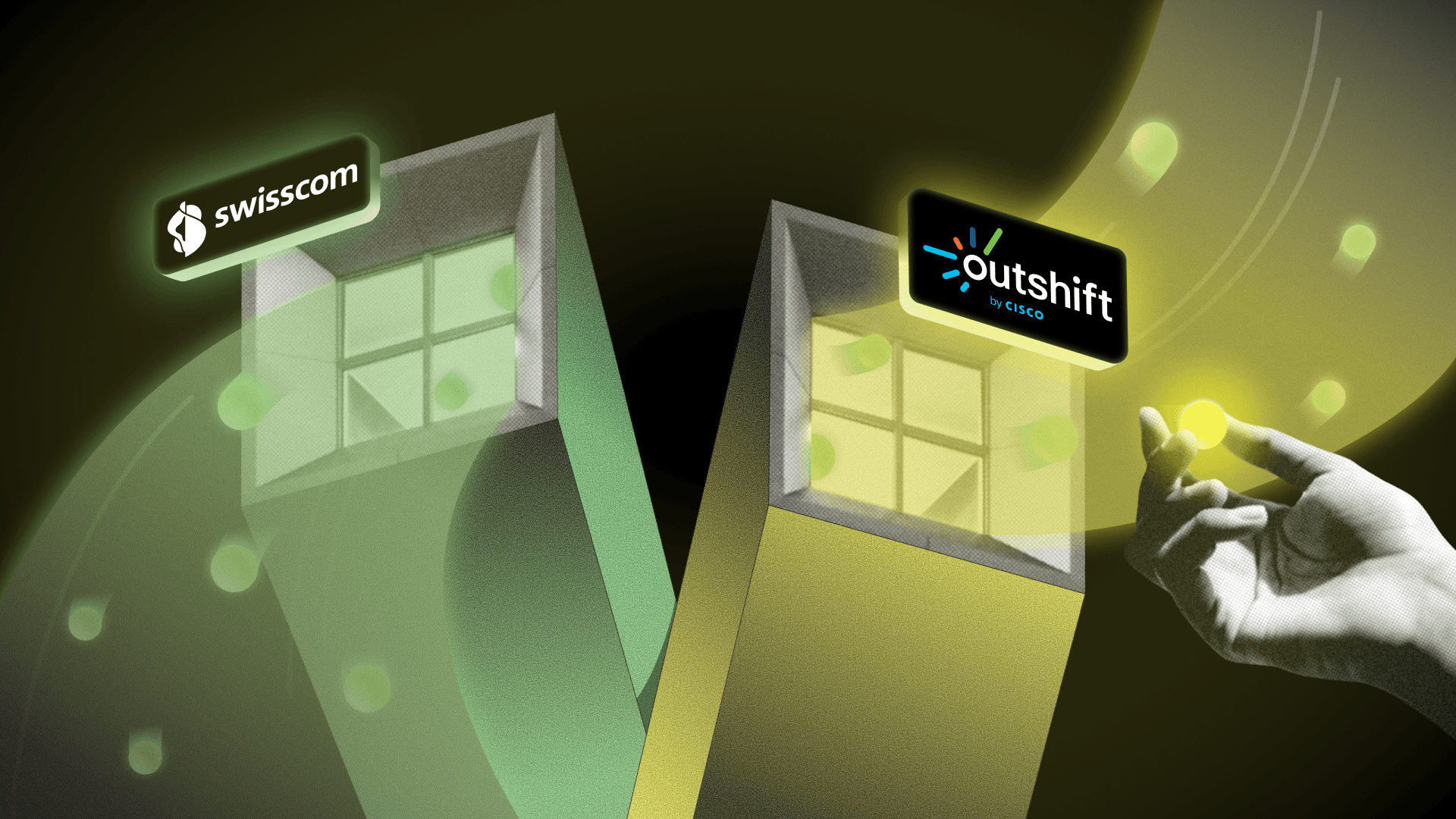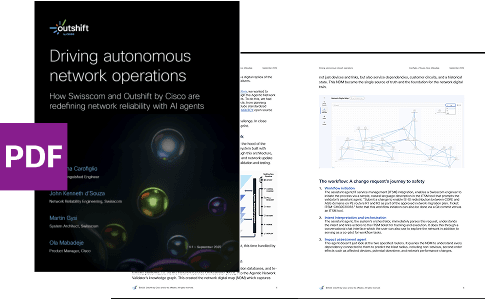Share

AI/ML
4 min read

Share
Even the world’s most advanced telecom networks can be brought to a standstill by a single misconfiguration.
According to Gartner, 80% of mission-critical outages would stem from people and process issues—with over half tied to change and configuration missteps. Globally, Splunk and Oxford Economics estimate that downtime costs organizations over $400B annually in lost productivity, revenue, and recovery efforts. The stakes for operational resilience have never been higher.
These challenges impact industry leaders like, Swisscom, Switzerland’s largest telecom provider. When Swisscom experienced a significant incident, it became the catalyst to rethink network reliability.
Earlier this year, Swisscom and Outshift by Cisco announced a strategic partnership to explore autonomous network operations. Today, we're proud to share the results of that collaboration.
Our shared goal was clear: shift network operations from reactive to predictive. By combining AI agents, knowledge graphs, and network digital twins (NDTs), we demonstrated that a real-world outage can be proactively prevented, showcasing a smarter, more resilient future for telecom infrastructure.
Swisscom has long been a pioneer in telecom innovation, launching one of Europe’s first nationwide 5G networks. Their next goal is to move from manual, human-centric operations to an AI-assisted framework, ultimately aiming for full autonomy.
But modern networks are intricate. Even the most rigorous physical testing can miss subtle dependencies, leading to service disruptions. Swisscom needed an approach that could predict and prevent failures before they reached production.
Our partnership was born from a service outage triggered by a routine configuration change. Though the change passed all standard lab tests, it caused a disruption in production.
Post-mortem analysis revealed two root causes:
This outage exposed the limitations of physical labs: slow, costly, and unable to fully replicate live environments. Swisscom teamed up with Outshift, as we were incubating an Agentic Network Validator, to develop a predictive, scalable solution.
"At first, I was skeptical about achieving tangible results due to the project's tight timeline and ambitious scope. However, my doubts were quickly dispelled. Outshift’s Agentic Network Validator solution demonstrated its remarkable potential by analyzing real-world network changes, enabling it to predict and prevent errors before they occurred. This technology will change the way we operate networks, and the transformation will happen much more swiftly than I ever anticipated." -Martin Gysi, System Architect at Swisscom
Together with Swisscom, we recreated the outage scenario to demonstrate how it could be proactively prevented. Our shared objectives:
The result? A clear failure signal, flagging the exact misconfiguration that caused the original outage. After correcting the change, all tests passed, and the outage was avoided.
Deploying multi-agent validation led to transformative outcomes:
Our collaboration with Swisscom is more than a successful proof of concept—it’s a blueprint for the future of network operations. By combining AI agents, network digital twins, and knowledge graphs, we’ve shown that autonomous networks are not just aspirational—they’re achievable.
Building on this momentum, Swisscom and Outshift are continuing to explore how elements of the solution could be integrated into future network operations. This ongoing collaboration reflects a shared commitment to advancing predictive, agentic AI approaches that strengthen network reliability and resilience.
Want the full story? Check out our whitepaper to learn more about the architecture and agent workflows and see how Swisscom and Outshift tackle network reliability head-on.


Get emerging insights on innovative technology straight to your inbox.
How Swisscom and Outshift by Cisco are redefining network reliability with AI agents

* No email required

The Shift is Outshift’s exclusive newsletter.
Get the latest news and updates on agentic AI, quantum, next-gen infra, and other groundbreaking innovations shaping the future of technology straight to your inbox.
